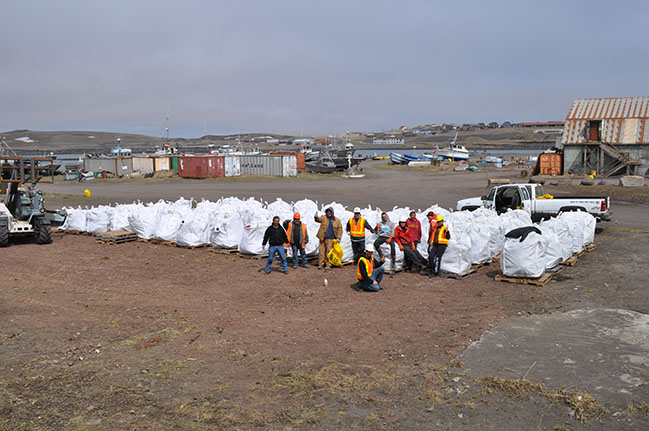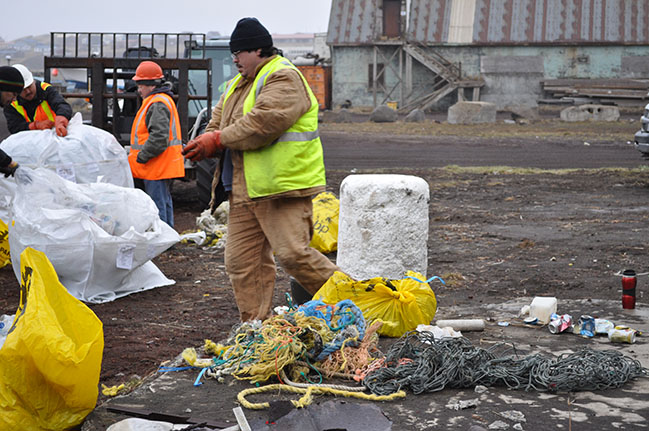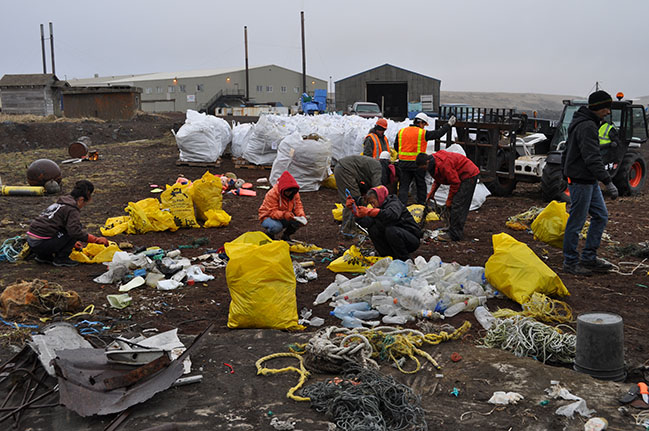Is there marine debris on the Pribilof Islands?
[separator type=’transparent’ color=” thickness=’1′ up=” down=”]
YES! The main risks of marine debris on the Pribilof Islands are the ingestion of small plastic particles by birds and marine mammals and the entanglement of fur seals. Seals can become entangled in trawl net webbing, plastic packing materials, and monofilament fishing line, and there is a local program to catch the entangled seals, remove the netting and release the animal.
[separator type=’transparent’ color=” thickness=’1′ up=” down=”]
Is there a beach cleanup program?
The Aleut Community of St. Paul Island has been cleaning up marine debris on St. Paul Island since 1998. The Alaska Marine Stewardship Foundation funds this incredible program. All the cleanups are on foot, with the help of trucks and 4-wheelers with trailers. Download the most recent report here
[separator type=’transparent’ color=” thickness=’1′ up=” down=”]
How much debris is collected, and what happens to it after collection?
Each year, 15,000 to 20,000 pounds of debris is collected. Hard to imagine…but this is the same weight as an African elephant!
The goal is to ship all the debris off island for recycling or landfilling. This year the plastic debris was shipped to the Plastic Bank in Vancouver for recycling.
[separator type=’transparent’ color=” thickness=’1′ up=” down=”]
Any cool finds?
The crew usually finds plastic bottles or containers with foreign writing. This year they found items with Asian, Russian, and German writing. They also found a large foam buoy that is likely Japanese tsunami–related.
Many thanks to Pamela Lestenkof, Ecosystem Conservation Office, Pribilof Islands Aleut Communities of St. Paul, for sharing this information and great photos



